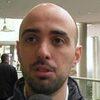Explore all the information on
Salmonella in poultry
Poultry can become infected with many different types of salmonella; about 10 percent of all Salmonella spp. have been detected in poultry. The most important are Salmonella Typhimurium and Salmonella Enteritidis. Other serotypes frequently occurring in poultry worldwide are, for example, Salmonella Hadar, Salmonella Livingstone, and Salmonella Senftenberg. In most cases, the birds are not sick and the production is not affected. The degree of illness depends on factors of both the bacteria and the host. The bacterium’s serotype and phage type is of significance but also the type of animal, age and general health status. S.Typhimurium and S. Enteritidis may induce clinical symptoms in poultry. It is mainly in very young chickens aged up to two weeks that salmonella can cause disease and death. The symptoms may vary and include weakness, loss of appetite and poor growth. The animals are crowded close to heat sources and sit with drooping wings and their eyes closed.
...
Comments : 0
Recommendations: 0
Introduction Salmonellosis is a significant global public health issue and causes high morbidity rate and has a significant economic impact. Foodborne diseases persist in many countries and consider the most important public health problem. There is global improvement in food processing practices, hygiene measures, education of food handlers on the potential risks and information to consumers for proper utilization, but still so far to eliminate the foodborne pathogen problem...
Comments : 0
Recommendations: 0


Effects of DON and antidote on pro-inflammatory mRNA expression of broiler
Suggested link
...
Comments : 0
Recommendations: 2
Lack of adequate controls or decontamination procedures render many breeding chicken flocks susceptible to avian salmonellosis, either from contaminated environments or between birds and their young within the flock. Salmonella Pullorum...
Comments : 0
Recommendations: 5
.jpg&w=3840&q=75)

Afla V ONE 5 - 300 ppb Method for Total Aflatoxin Detection in Complete Feeds and Pet Food
Suggested link
Commercial laying hens health and production activity are continuously threatened, intensive breeding is becoming the most followed approach for many different type and size of companies. Therefore there is world-widespread agreement on nutrition key importance, since finding the right feed blend and measuring its performance is what really makes the difference for both the animal productivity and wellbeing. Silvateam...
Comments : 2
Recommendations: 9
Introduction. Salmonella Gallinarum with the biotypes Gallinarum and Pullorum causes two septicaemic diseases in poultry: Fowl Typhoid and Pullorum Disease. The former Salmonella Pullorum serovar is not recognised anymore as such. Both biotypes are differentiated by a few biochemical and molecular tests. This bacterium is highly adapted to produce a septicaemic disease in birds. In general all other animals’ species...
Comments : 63
Recommendations: 2
.jpg&w=3840&q=75)

Trends and challenges in Poultry Production: Jonathan Cade, President of Hy-Line International
Suggested link
Aaron Kiess (Mississippi State University) and Tomi Obe (University of Georgia) talk about a current hot topic in the poultry processing industry: salmonella sanitization. Let's Squawk About It is a monthly interview segment by the Poultry Science Association....
Comments : 0
Recommendations: 0
1. Introduction Transportation coops have been shown to be a vector for cross-contamination during the 3–12 h transportation and holding period that occurs before birds are processed [1]. These coops contain organic matter and microorganisms left by previously transported flocks [2]. Salmonella and Campylobacter levels can increase by 20 to 40% during loading, transportation, and holding before being processed [3–5]. Transportation is a known stress factor in poultry...
Comments : 0
Recommendations: 0
...
Comments : 0
Recommendations: 0
...
Comments : 0
Recommendations: 0
...
Comments : 0
Recommendations: 0
...
Comments : 0
Recommendations: 0


Bacillus amyloliquefaciens CECT 5940 - Gut-flora stabilizer for sustainable broiler production
Suggested link
Manuel Da Costa (Zoetis) commented on trials done with five serotypes to improve poultry protection, during IPPE 2020 in Atlanta, USA....
Comments : 7
Recommendations: 4
Martha Pulido-Landinez (Mississippi State University) gave recommendations on how to deal with this disease, including identification of sources, during IPPE 2020 in Atlanta, USA....
Comments : 4
Recommendations: 5
"What are the risks of Salmonella in Poultry? "Dr. Pablo Chacana, R&D in Poultry Health, INTA, discusses the key points of this issue during the 2019 Multi-State Poultry Feeding and Nutrition Conference and Silvateam’s Technical Symposium...
Comments : 1
Recommendations: 0
Part I: Are you doing enough to control Salmonella?
Salmonella ranks among the world´s biggest threats to health. In the United States alone, it is thought to be responsible for around 378 deaths and an estimated 19,336 hospitalisations each year. And these are just the reported cases. If you´ve ever had to take a few days off work with a nasty case of "food poisoning", but not bothered...
Comments : 12
Recommendations: 0
Armitra Jackson-Davis (Alabama A&M University) explained her research on the benefits of Yucca extract in combination with organic acids, during IPPE 2020 in Atlanta, USA....
Comments : 2
Recommendations: 2
A balanced microbiota is vital for the intestine to have good function, in addition to gut integrity. The microbiota is formed by non-pathogenic microorganisms, which are of key importance for the metabolism and the absorption of nutrients and other compounds consumed by animals. A healthy microbiota has a high diversity of microbial genera in perfect balance, allowing an increase in the metabolic capacity of the intestine. Beneficial microbiota assists in the digestion and...
Comments : 0
Recommendations: 5


Effects of DON and antidote on pro-inflammatory mRNA expression of broiler
Suggested link
Salmonellosis is the common zoonotic disease, together with campylobacteriosis in the EU, and Salmonellla is a common cause of foodborne disease outbreaks (EFSA). In the EU, over 91,000 salmonellosis cases are reported each year. EFSA has estimated that the overall economic burden of human salmonellosis could be as high as €3 billion a year (EFSA). 79,698 cases were reported confirmed cases of human salmonellosis in the EU/EEA in 2018, by the most frequent serovars in 2018 (EFSA). The...
Comments : 0
Recommendations: 1
Salmonella Enteritidis is a significant foodborne pathogen that can often be traced back to poultry and poultry products. Feed ingredients such as Bacillus probiotics and parietal yeast fractions have gained in interest to reduce food safety issues. Consequently, 2 in vivo trials were setup to evaluate the ability of these products to reduce Salmonella Enteritidis colonization in the laying pullets and hens. In the first trial, 60 Hy-Line Brown pullets aged 9...
Comments : 0
Recommendations: 1





































